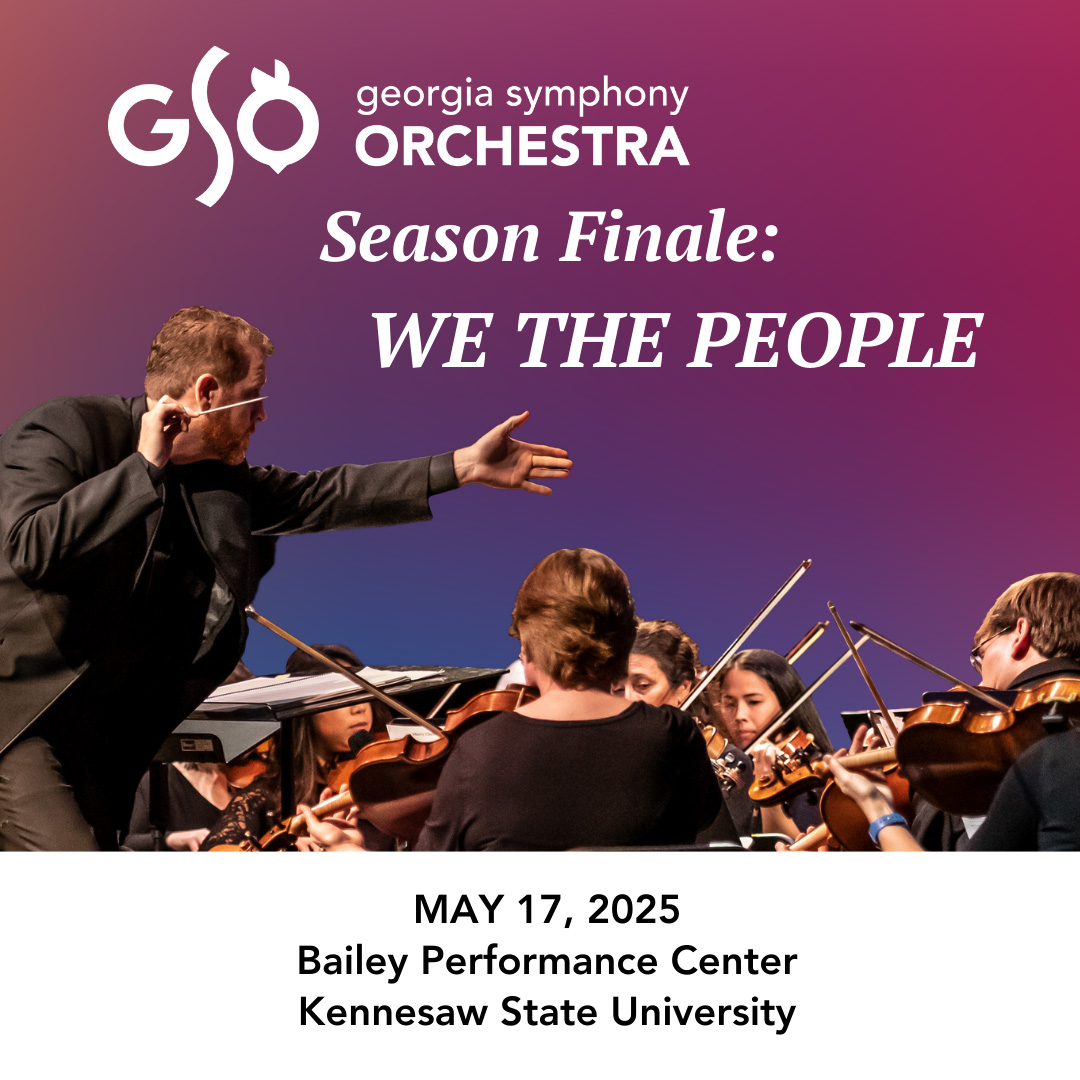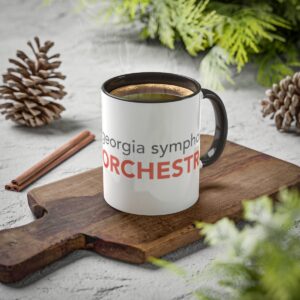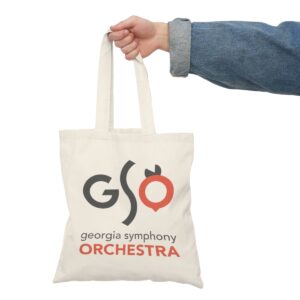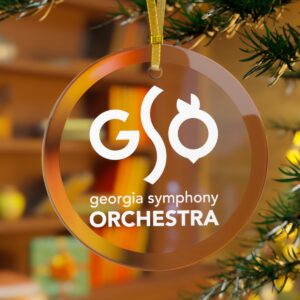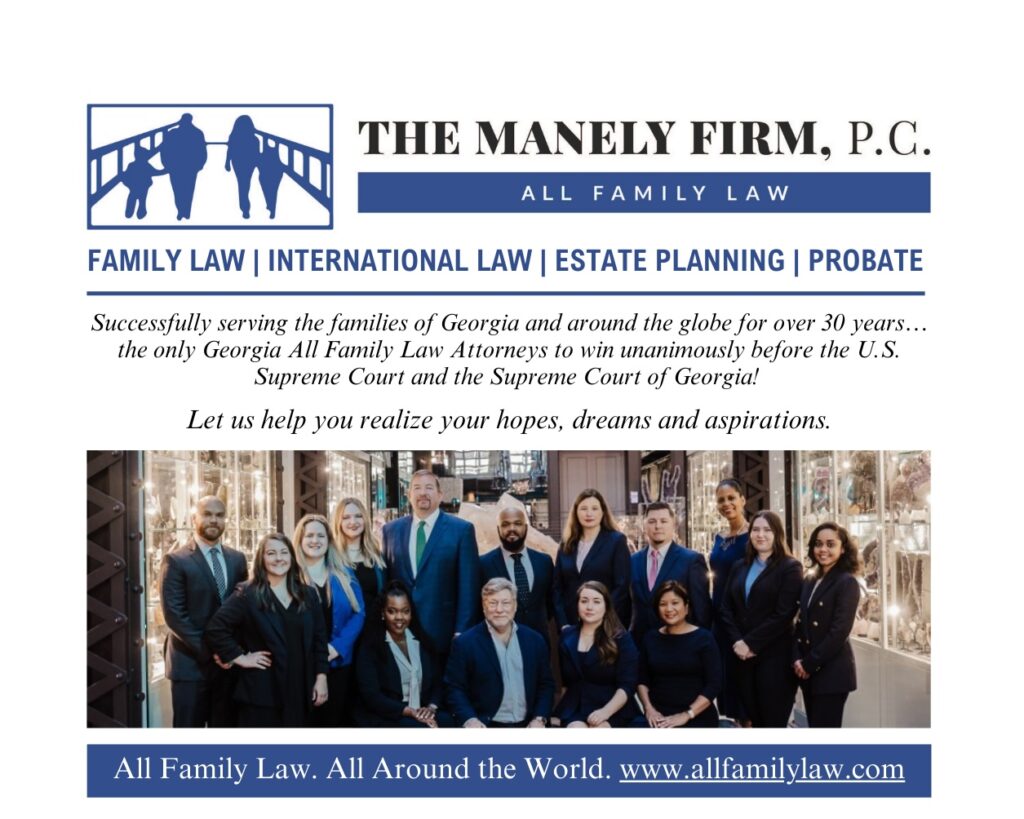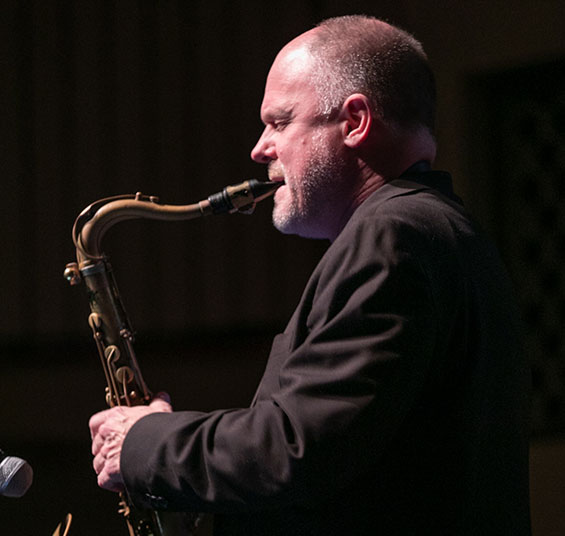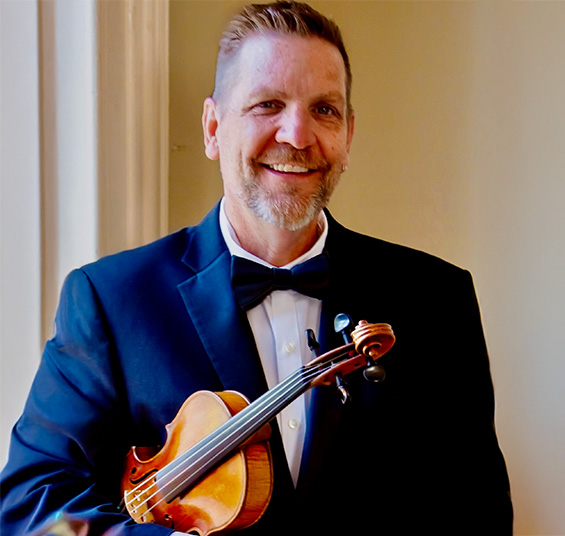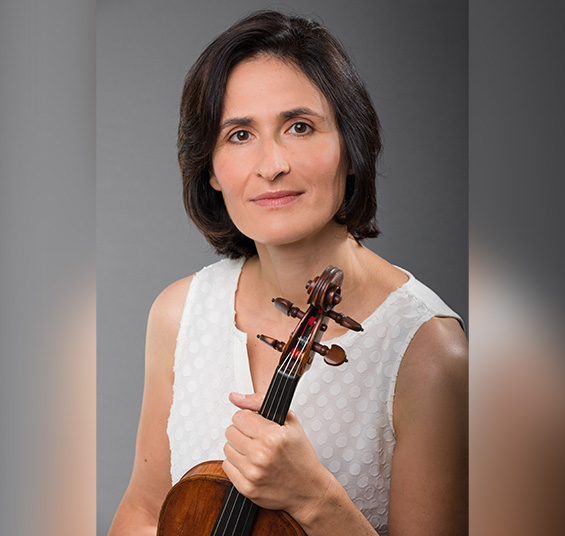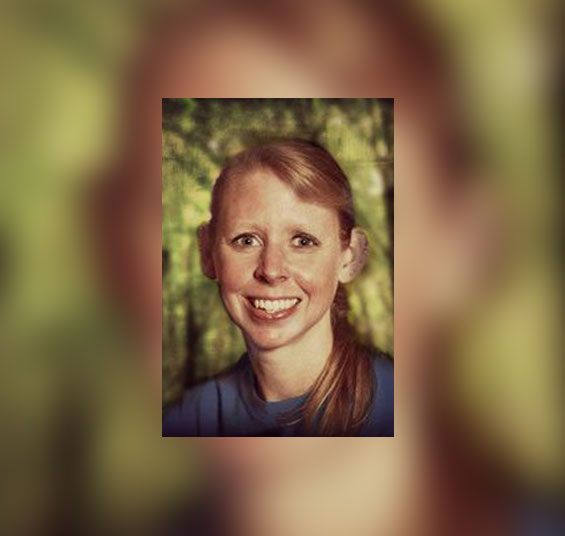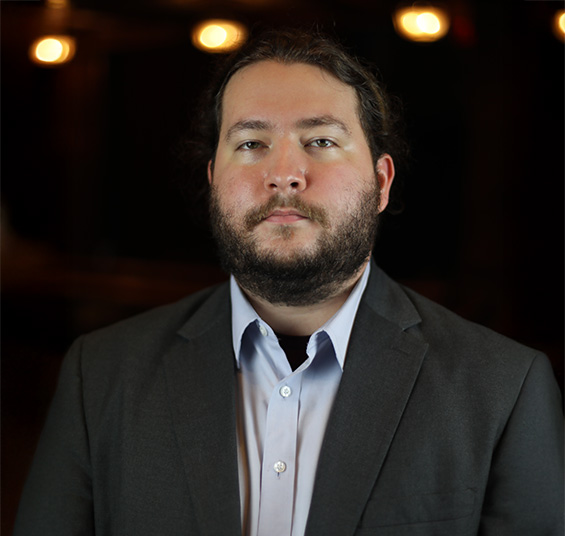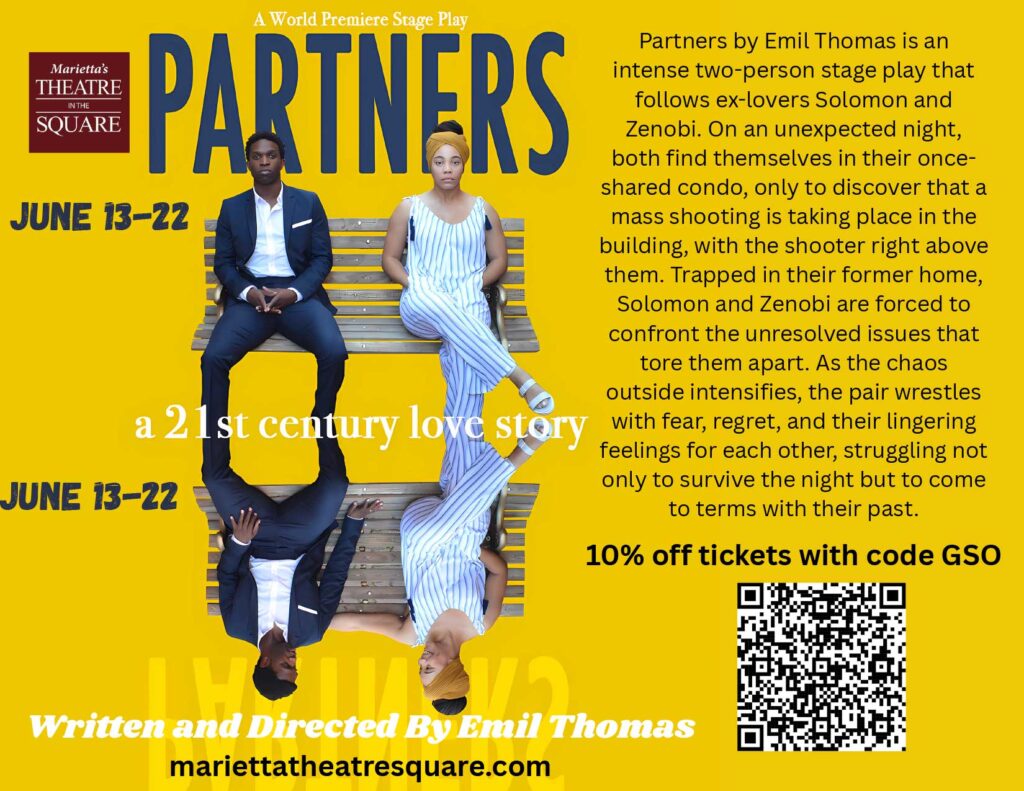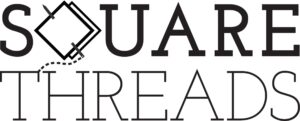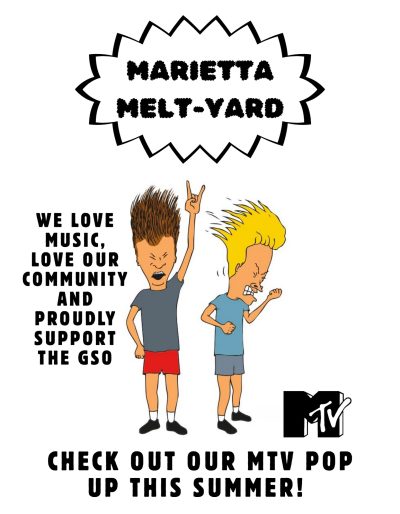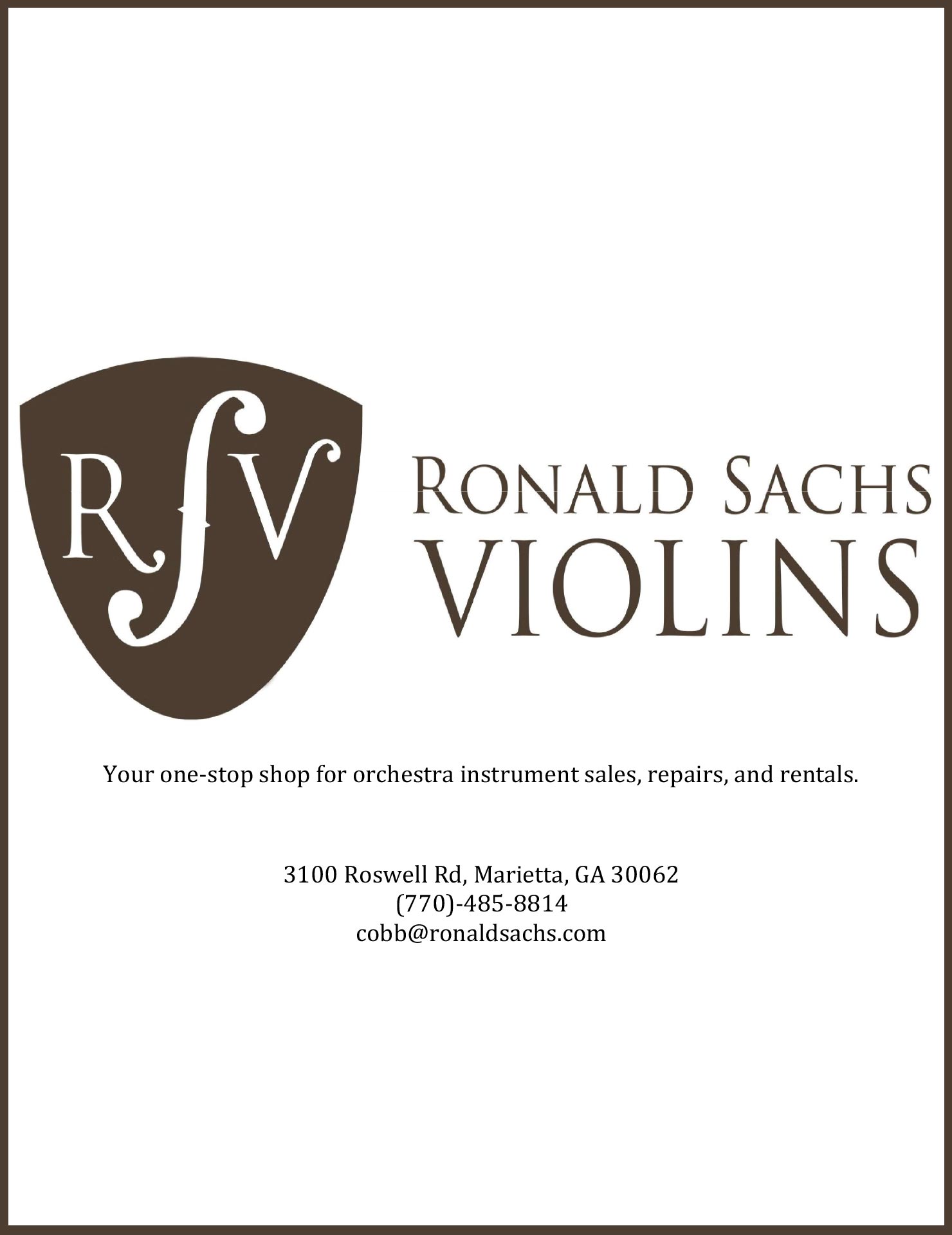We the People May 17, 2025
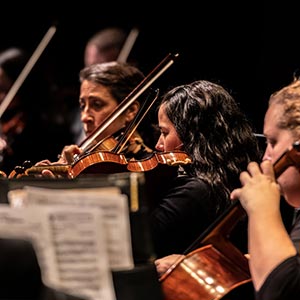
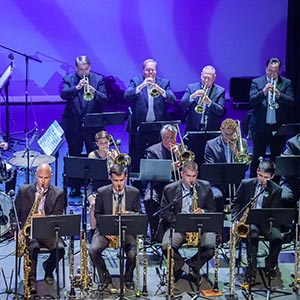
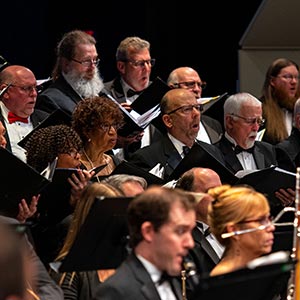
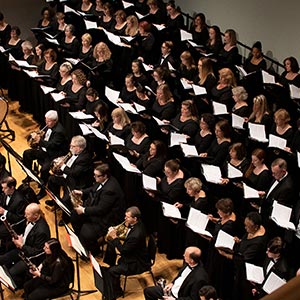
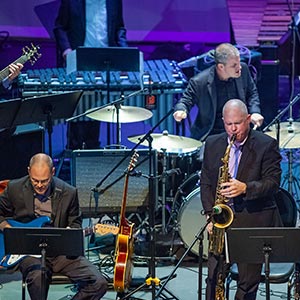
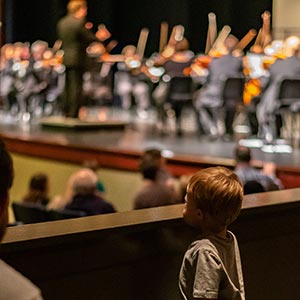
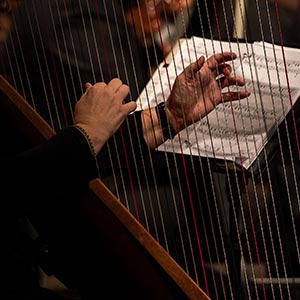

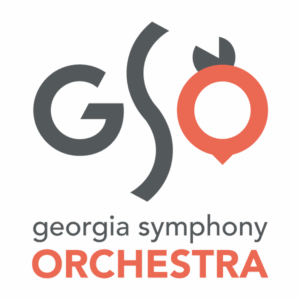
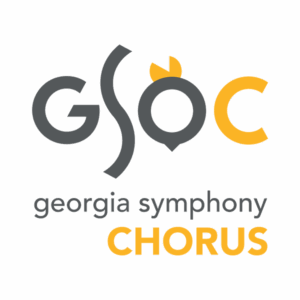
Want to win a pair of tickets to a future GSO Performance?
Fill out our 3 minute audience survey for a chance to win 2 tickets to a future GSO concert.
Program Guide Contents
- Georgia Symphony Upcoming Events
- Sponsors and Supporters
- Administration, Artistic Staff, and Board
- About the Organization
- Timothy Verville, Music Director and Conductor
- Nathaniel F. Parker, Associate Conductor and Dr. Bobbie Bailey GYSO Artistic Director
- Bryan Black, JG Morgan Chorus Director
- Orchestra Personnel
- Georgia Symphony Orchestra Chorus
- Program & Program Notes
Sponsors and Supporters
It is through the sustained generosity of our supporters that the Georgia Symphony Orchestra is able to continue delivering quality enrichment, entertainment and education throughout our community and greater region, encompassing music and arts lovers of all ages.
Our growing list of programs supports a wide range of needs in the community. Just a small sampling of the diverse options includes young musician education, inclusiveness in the concert hall, veterans’ support, free and affordable concert tickets, community presentations, and collaborative promotion of other outstanding nonprofit organizations.
Combining your giving with a musically infused GSO program doubles your impact in the community. Donating to the GSO is easy. Visit us at georgiasymphony.org/donate. Or call 770-615-2908.
Special Thanks to the Bobbie Bailey Foundation
for their gift of a $1 Million Dollar Endowment Fund
The GSO is sincerely grateful for the substantial support of our youth education program given by:
The Georgia Symphony Orchestra is Supported by
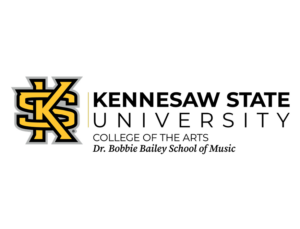

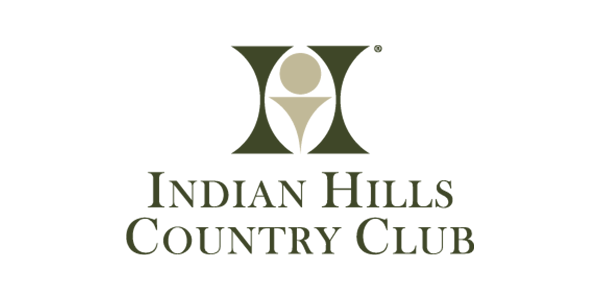


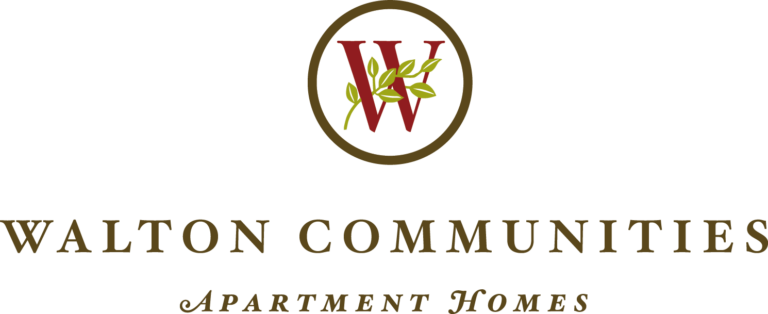
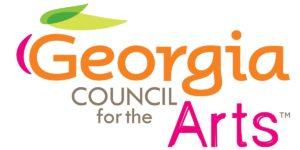



Platinum Baton Circle $25,000+
Bobbie Bailey Foundation
Dr. John and Linda Cooke
David, Helen and Marian Woodward Foundation
Gold Baton Circle $15,000-$24,999
Bobbie Bailey Foundation
Cobb Travel and Tourism
Georgia Council for the Arts
Marietta Tourism Grant
National Endowment for the Arts
The Imlay Foundation
Silver Baton Circle $10,000-$14,999
Bob and Linda Bonstein
Kimberly Gresh
Susan Traendly
Walton Communities
Bronze Baton Circle $5,000-$9,999
Mary Kay Howard
Pamela Hubby
McMaster-Carr Supply
John and Shirley Morgan
Moore Colson CPAs
Publix Supermarkets
Bruce and Pam Rhyne
Jeffrey and Louise Tharp
United Contractor Services
Jeff and Rose Whittingham
Conductor’s Circle $2,500-$4,999
Anonymous
Anonymous
Cobb Community Foundation
Cobb EMC Community Foundation
Indian Hills Country Club
Tutt and Debra McCracken
Valencia McCrimmon
Gregory and Christine Mishkin
Randy and Judy Ribarsky
Sydney Trew
The Vaughn Foundation
Principal Circle $1,000-$2,499
Anonymous
Anonymous
Daniel Barker
Bright Wings
Marilyn Brooks
Dr. Bruce Gillett
Chris and Lisa Greenwood
Greystone Power
Lee and Gail Herring
Ann Hixson
Sally Jobe
Kimberly Clark Foundation
Michael & Pauline Knowles
Berna and Noah Levine
The Manely Firm
Lydia Mayes
Valencia McCrimmon
Mighty Cause Foundation
Robert Kent Galleries
Ronna Ruppelt
Baker and Debby Smith
David and R. J. Starnes
Erica Stein
Adam and Mallory Stensland
Alan and Susan Stensland
Wahid Tawfik
Richard and Pollyann Thompson
Patricia Torres
Jeffrey and Suzanne Tucker
Todd Youngblood
Musicians Circle $500-$999
Anonymous
Anonymous
Dane Bamburry
David and Leta Barry
Cindy and Henry Bohn
Regina Brown
William and Kim Dyer
Frank Harris
Marianne Holdzkom
Wendy Lerner
Regina Malloy
Yvonne and Michael Perrino
Carlo Purefoy
Dwight Shoemaker Family
Lily WhiteRose
Wallace Ziprik
Concertmaster Circle $250-$499
Anonymous
Anonymous
Alenia Baxter
Judith F. (Judy) Bullard
Buddy and Lillian Darden
Stephen Hall
Nancy Hodges
Clifford McCune
Gil Moor
Vijay & Carolyn Srinivasan
Gerry Stephens Jr
Burt and Sharon Stills
Prelude Circle $100-$249
Anonymous
Anonymous
Janet Adams
Jordan Bonar
Kim Bonstein
Beth Collier
Katherine and James Chester
Katherine Dater
James Dubsky
Joe Ferst
Monica Fambrough
Barbara Hammond
Annie Harris-Gunter
Carlyn and Ron Krieger
Emily Lembeck
Dennis Loubiere and Edward Eanes
Beverly Martin
Margaret Menz
Lee and Sandra Miller
Wei Money Family
Bill and Sara Needs
Mary Nimsgern
Jane Redwine
Janelle Runge
Mark Schilke
Peter and Marian Sebel
Veronica Smith
Eric Swanson
Jo Tucker
Laurie Washington
Rebecca Weaver
Ovation Circle $50-$99
Anonymous
Anonymous
Anonymous
Ken Sabo
Evan Schechtman
Marshall and Patty Smitherman
Cyndy Stephens
Topaz Wong
In-Kind Supporters
ARTS of Cobb
Atlanta Marriott Northwest at the Galleria Hotel
Carriage House Catering
Chris Savas Photography
Cobb Travel and Tourism
Frank Harris Law
Gift of Music Foundation
Moore Colson CPAs and Advisors
Sercante
Six Flags Over Georgia
Timothy Verville
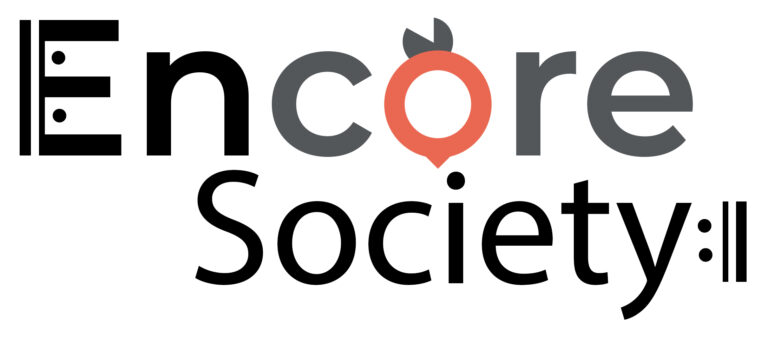
Daniel Barker
Barbara Hammond
Marianne Holdzkom
Mary Kay Howard
Michael and Pauline Knowles
Dennis Loubiere
Tutt and Debra McCracken
Jeffrey & Suzanne Tucker
Jeff and Rose Whittingham
In Memoriam
Allan Cheshire in memory of Susan Cheshire
Brenda Rhodes in memory of Joanna Cox
Debra McCracken in memory of Frances M. Keith
Debra McCracken in memory of Joanna Cox
Eileen Paulin in memory of Jeff Kotzan
Frank Harris in memory of Polly Anna Harris
Grace Johnson in memory of Frances M. Keith
Jeff and Rose Whittingham in memory of their parents
Joseph Yorio in memory of JoAnn Mary Yorio
Linda Acevedo in memory of Jeff Kotzan
Mary Kay Howard in memory of the Grandfather of Sydney Trew
Ron & Staci Martinez in memory of Frances M. Keith
Sharon Stills in memory of Helen Mackey, Theresa Ireland, Betty Knautz, Sylvia Peters
Susan Stensland in memory of Joanna Cox
Tish Fricks in memory of Jennifer Whitley
In Honorarium
Alenia Baxter in honor of Mary Kay Howard and Susan Traendly
Annonymous in honor of Kate Pfirman
Barbara Hammond in honor of Susan Stensland
Belisa Urbina in honor of Stephen Hall
Brenda Rhodes in honor of Susan Stensland
Brendan Knoblauch in honor of Mary Kay Howard
Dane Bamburry in honor of Valencia McCrimmon
Emily Lembeck in honor of Debbie McCracken
George Darden in honor of Amy and Bryan Black
Ira Pittman in honor of Suzanne Tucker
Jane McGuigan in honor of Mary Kay Howard
Joan Harrell in honor of Susan Stensland
John Morgan in support of Bryan Black, JG Morgan Choral Director
Katherine Dater in honor of Mary Kay Howard
Kim Bonstein in honor of Linda and Bob Bonstein
Kristen Bonstein in honor of Bob and Linda Bonstein
Linda Moore Connor in honor of Timothy Verville
Marian Sebel in honor of Bryan Black
Marie Boatright in honor of Mary Kay Howard
Martha and Dennis Moore in honor of Susan Stensland
Mary Argent in honor of Mary Kay Howard
Nancy O’Neill in honor of Bob and Linda Bonstein
Noah Levine in honor of the GSO Chorus
Valencia McCrimmon to the Julie Whitehead Memorial Library
Paula & Grainger Morrison in honor of Frank Harris & Abby Avery
Phillip O’Brien and Allison Fichter in honor of John and Linda Cooke
Rhea Pridgen in honor of Linda Cooke
Sharon Stills in honor of Susan Stensland
Richard and Pollyann Thompson in memoy of Margaret Curry
Susan Traendly in honor of Beth Johnson
Susan Traendly in honor of Mary Kay Howard
Susan Traendly in honor of Pat Torres
Sydney Trew in honor of Susan Stensland and Mary Kay Howard
Administrative Staff
Kim Ellet
Development Director
Ann Stoskopf
Business & Patron Manager
Stephen Hall
Operations and Personnel Manager
Artistic Staff
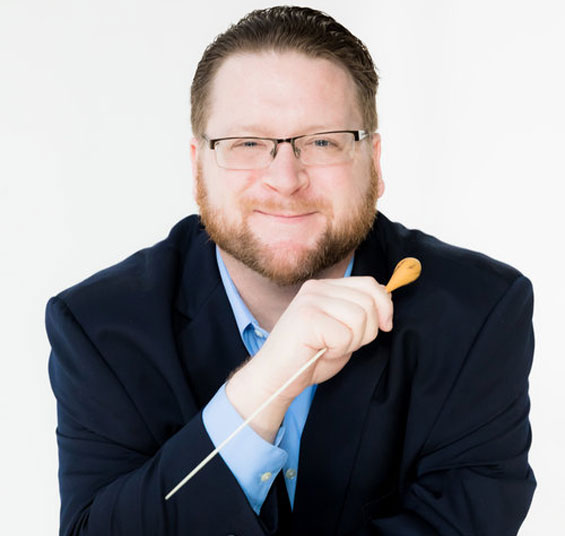 Nathaniel F. Parker
Nathaniel F. Parker
Board of Directors
For information about joining our Board of Directors or Advisory Board, please click here.
Rebecca Strojan Weaver, Chair
Collective Insights
Pam Hubby, Vice Chair
Ret. Artsbridge Foundation
Adam Stensland, Secretary
pwc
Michael Knowles
Fifth Third Bank
Greg Mishkin
Escalent
Sydney Trew, Treasurer
Moore Colson CPAs and Advisors
Bob Bonstein
Ret. / Cotiviti
Frank Harris
Frank Harris Law
Pam Hubby
Ret. ArtsBridge Foundation
Debbie McCracken
Ret. Educator/ Administrator
Kathryn Smith
Walton Birch
R.J. Starnes
CDH Partners
Erica Stein
KPMG
Lew Henry
Mauldin & Jenkins
Amy Drabant
Atlanta Design Solutions
Adam Stensland
PWC
Rebecca Strojan Weaver
Collective Insights
Amanda Williams
Cobb County School System
Suzanne Tucker, Ex officio
Georgia Symphony Orchestra
Timothy Verville, Ex officio
Georgia Symphony Orchestra
Advisory Board
Jim Glover
Atlanta Fine Homes Sotheby’s International Realty
Chad Hagan
Hagan Capital
Mary Kay Howard
Past-Interim Co-Executive Director GSO
Cheryl Richardson
Marietta Councilwoman, Ward 1
Susan Stensland
Past Executive Director GSO
Patricia Torres
Ret. Development Director GSO
Dr. Jeffrey Tharp
Wellstar Medical Group
Gustavo De la Torre Martinez | Allen Yun | Eduardo Maduro | Allie King
MPAC Interns
John Stagmeier | Ellis Dill
GYSO Jazz! Intern
Evan Skrip
GSO Chorus Site Coordinator
Simri Martinez Chantaca
GSO/GYSO Library Intern
Alyssa McBride
Fine clothing for men and women.
770-919-7098
77 Church Street
Marietta, GA 30060
About Us
Founded in 1951, the Georgia Symphony Orchestra has engaged audiences through imaginative programming, visionary leadership, and critically acclaimed performances.
Our Mission
The mission of the Georgia Symphony Orchestra is to break down access barriers to ensure that the transformative power of music serves all members of our community. The GSO enriches lives and creates impact far beyond the concert hall through innovative and engaging performances, world-class educational programs, and intentional community engagement.
Our Vision
Our vision is to be the cultural heartbeat of our community. We envision a world where every voice resonates, is celebrated and is valued through the unique power of music.
Our Values
We value high quality musical performances and we prioritize quality musicianship in our productions.
We value the accessibility of our programs to the community, we prioritize making venues, times, and cost fit the needs of the community, and we make sure no one will be left behind.
We embrace diversity and innovation in our programming to inspire the widest possible audience with our musical experiences.
We value the importance of volunteers across our organization.
We value the support of our donors and audience members and continually manage our resources effectively and efficiently.
We recognize the vital contributions of our musicians and educators and we strive to maintain relationships that create a positive environment for all.
We strive to provide a variety of high-quality musical education opportunities for youth and for life-long learning.
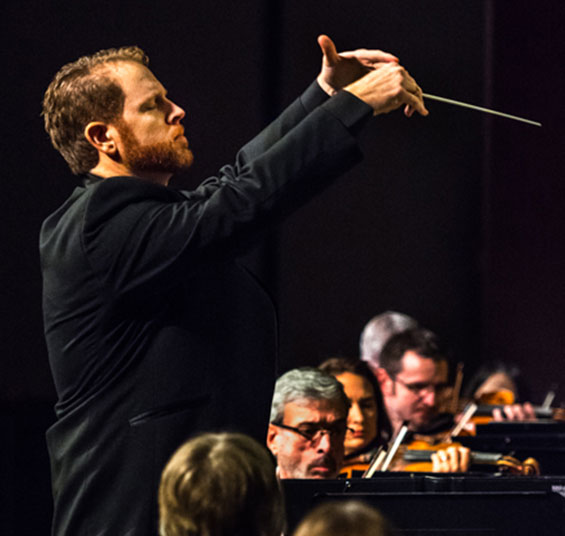
Timothy Verville
Music Director & Conductor
Born in western Oklahoma, Timothy Verville, an award-winning conductor and composer, spent his early years far from concert halls, growing up on a farm where his family raised and trained show horses. Eventually moving to “the city,” he was first exposed to music education in public schools. This ignited his journey of musical discovery and excellence, propelling him to stages and acclaim worldwide.
Verville is a uniquely multifaceted conductor in the modern orchestral sphere. His creativity, innovation, and dedication to sharing the power of the arts result in performances that captivate audiences. His work is described as “awe-inspiring” and credited for “bringing down the house” by the Atlanta Arts Scene. He is praised for his “finely focused conducting (in which) the pace of the music never sagged” by The Tulsa World.
Internationally, Verville conducted the inaugural Kyushu International Festival in Japan and has appeared with the Kyushu Symphony Orchestra, the Far Eastern Symphony in Russia, Opera Panama and the National Symphony Orchestra of Panama. In the U.S., his appearances include the Richmond Symphony Orchestra, Tucson Symphony Orchestra, West Virginia Symphony Orchestra, and many others.
Since 2016, as Music Director and Conductor of the Georgia Symphony Orchestra, Verville has fostered significant growth in the organization. His focus on audience engagement and outreach has been recognized in the community. In 2023, the Georgia Secretary of State proclaimed him an Outstanding Georgia Citizen for his service.
Under his visionary leadership, the Georgia Symphony has expanded its reach and built bridges to underrepresented populations. Collaborating with Girls Who Conduct, he created a fellowship for women conductors. He also partnered with Make a Wish Georgia to fulfill a young person’s dream of conducting an orchestra, and designed sensory-friendly concerts supported by the National Endowment for the Arts.
From 2010 to 2017, Verville served as the founding Artistic Director and Conductor of Arizona Pro Arte, leading to exponential growth in the organization. He established a full classics season, a summer series, educational performances, a chamber music program, and a dance ensemble.
Verville’s long-standing relationship with the Boston Chamber Orchestra included roles as Associate Conductor and Principal Guest Conductor. Additional previous engagements include Music Director and Conductor of the North Valley Chamber Orchestra (AZ), Scottsdale Baroque Orchestra (AZ), and Conductor of the Pollard Theatre (OK).
An award winner in the American Prize for Orchestral Performance as well as in Composition, his writing style encompasses a wide range of output. Recent premieres include the genre-blending “Liminal: an Atlanta Concerto for Amplified Looping Cello and Orchestra” with Okorie “OkCello” Johnson, and his upcoming “Requiem Americano.”
Verville was mentored by esteemed conductors Bruce Hangen, Timothy Russell, and James DePreist. He studied in masterclasses with David Effron, Markand Thakar, and Neil Varon. At the renowned Monteux School and Music Festival, he was selected as an orchestral assistant while studying with Michael Jinbo. Verville earned degrees in music from the Boston Conservatory, the University of Oklahoma, and Arizona State University.
He resides in Georgia with his wife and children.
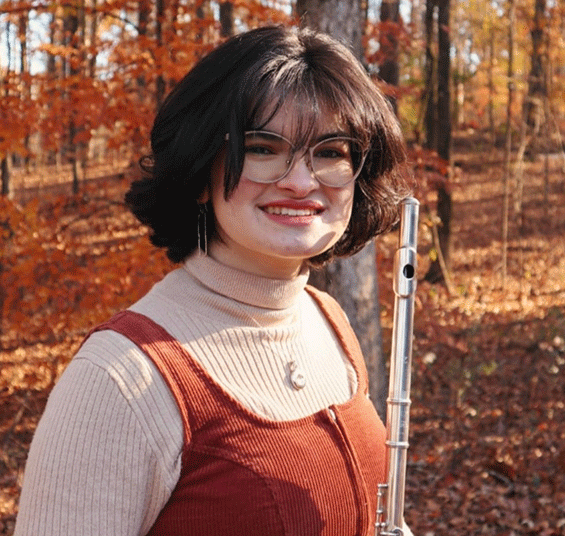
Nathaniel F. Parker
GYSO Flute Choir Director
A talented and versatile musician, Nathaniel F. Parker has conducted orchestras in the United States, Peru, Russia, Poland, England, and the Czech Republic. Equally at home working with professionals and training future generations of musicians, Dr. Parker is Director of Orchestral Studies at the Kennesaw State University School of Music—serving as Music Director and Conductor of the Kennesaw State University Symphony Orchestra and Conductor of the Kennesaw State University Opera Program—and Associate Conductor of the Georgia Symphony Orchestra. His recent guest conducting engagements include appearances with the Jackson Symphony Orchestra (Michigan), the Connecticut Music Educators Association (CMEA) All-State Orchestra, the Fulton County High School Honor Orchestra (Georgia), and the Georgia Music Educators Association (GMEA) District 9 High School Honor Orchestra.
Dr. Parker is the recipient of numerous honors, awards, and scholarships. He was named a finalist for a Conducting Fellowship with the New World Symphony, a semi-finalist for a Conducting Fellowship at Tanglewood, and a Candidate for the Respighi Prize in Conducting; he also received a Citation of Excellence in Teaching from the Pennsylvania Music Educators Association. An active scholar, Dr. Parker’s writings have been published by the Conductors Guild and the College Orchestra Directors Association (CODA). He has presented research at the College Orchestra Directors Association’s national and international conferences and is Editor of the Journal of the Conductors Guild.
Dr. Parker has served as Music Director and Conductor of the Concert Orchestra and faculty at New England Music Camp (Maine), and Interim Music Director and Conductor of the Georgia Youth Symphony Orchestra’s (GYSO) Symphony and Camerata orchestras. Before relocating to Georgia, he was Director of Orchestral Activities and Assistant Professor of Music at Marywood University (Pennsylvania) where he was Music Director and Conductor of the Marywood University Orchestra and taught courses in conducting, instrumental methods, musicology, and analytical techniques. Other previous positions include Associate Conductor and Production Manager of the Jackson Symphony Orchestra (Michigan), Music Director and Conductor of the Jackson Youth Symphony Orchestra, Director of the Jackson Symphony Orchestra Community Music School, Graduate Conducting Intern at Michigan State University, Music Director and Conductor of the Mason Orchestral Society’s Community Orchestra and Youth Symphony (Michigan), Assistant Director of Music at Xaverian High School (New York), Conductor of the New Music Festival of Sandusky Orchestra (Ohio), and Graduate Assistant Conductor and Teaching Assistant at Bowling Green State University (Ohio).
Parker earned a Doctor of Musical Arts in Orchestral Conducting from Michigan State University, where his primary instructors were Leon Gregorian and Raphael Jiménez. During his time at MSU he regularly appeared with all the university orchestras and focused his doctoral research on Leonard Bernstein, specifically the composer’s Symphony No. 2, “The Age of Anxiety.” He earned a Master of Music in Orchestral Conducting from Bowling Green State University, where he studied with Emily Freeman Brown. His other conducting mentors include Stephen Osmond, Gary W. Hill, and Timothy Russell. In addition to his training in academia, Dr. Parker participated in numerous conducting master classes and workshops, conducting orchestras under the tutelage of nationally and internationally renowned conductors and conducting pedagogues including Christoph Eschenbach, George Hurst, Arthur Fagen, Markand Thakar, Mark Gibson, David Itkin, and Paul Vermel. Parker began his collegiate education at Arizona State University, where he studied bassoon with Jeffrey G. Lyman and graduated magna cum laude with a Bachelor of Music in Bassoon Performance.
Nat resides in Kennesaw with his wife, Melody, their son, Jacob, and their dog, Sammy.
For more information, please visit www.nathanielfparker.com
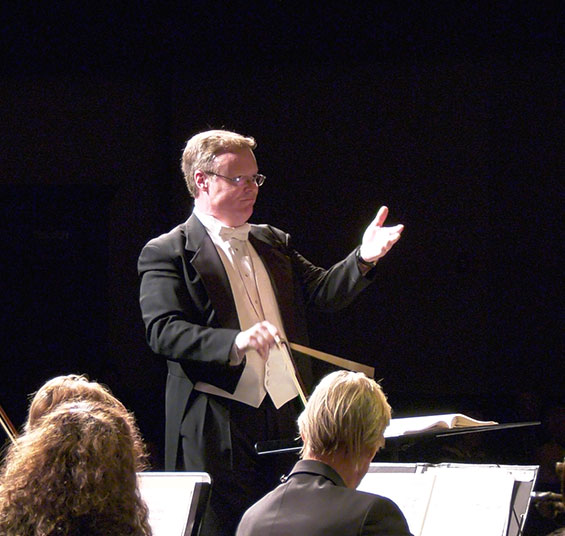
Bryan Black
JG Morgan GSO Chorus Director
Bryan Black is the founding conductor of the Georgia Symphony Orchestra Chorus which he established in 2007. Over sixteen seasons the ninety-voice Chorus has performed masterworks such as Orff’s Carmina Burana, Beethoven’s Ninth Symphony, Poulenc’s Gloria, Bach’s Magnificat, Walton’s Belshazzar’s Feast, Vaughan-William’s Sea Symphony, and the Georgia premier of William Grant Still’s And They Lynched Him On A Tree. Other concerts have featured notable choral repertoire including Corigliano’s Fern Hill, Handel’s Let God Arise, and Robert Ray’s Gospel Mass. The chorus made its first international tour to Spain in 2012 under his direction and anticipates a tour of the United Kingdom in 2025.
Black has been active in the broader music community for three decades and was recognized as a “Lexus Leader in the Arts” by Atlanta Public Broadcasting in 2003. After a collaborative performance of Hugo Distler’s Totentanz in 2004, Bryan was awarded a cultural ambassadorship from the Atlanta Goethe-Institut and attended an advanced language symposium in Weimar, Germany. He sang for several years with the ASO Chorus and Chamber Chorus, including Robert Shaw’s final performance of Bach’s B-minor Mass in Carnegie Hall. He also taught on the adjunct faculty of Georgia State University and was visiting conductor for the Candler School of Theology Choraliers at Emory University. Choirs led by Black have performed at the Vatican, Christ Church Cathedral (Oxford), the Piccolo Spoleto Festival in Charleston, and on tours to Germany, Italy, the Czech Republic, and Norway.
Bryan is past-president of Georgia ACDA (American Choral Director’s Association) and served six terms at the divisional and national levels as Resource and Repertoire coordinator for reading sessions and conference performances. While serving ACDA, he assisted John Rutter as organizer for a conductor’s honor chorus in 2013 and planned the national 2019 “Music in Worship” event featuring Jason Max Ferdinand and the Aeolians. He has contributed articles to the Choral Journal, the Canterbury Dictionary of Hymnology, and Tim Sharp’s Sacred Choral Music Repertoire (pub. GIA) reflecting his work as a practicing church musician since the age of seventeen. Black currently serves as organist / choirmaster at St. James Episcopal Church on the historic square in Marietta, Georgia.
Bryan holds a certificate in German as a foreign language (Goethe-Institut Berlin), a BM degree in organ (Samford University), and an MM degree in choral conducting from The Florida State University where he studied with Rodney Eichenberger and André Thomas. His doctoral thesis (DPM, Southern Methodist University) considered the impact of choral music in a maximum-security women’s prison and how the inmates’ lived experience of musicking models resilient community in an age of technological acceleration and relational isolation.
Georgia Symphony Orchestra Personnel
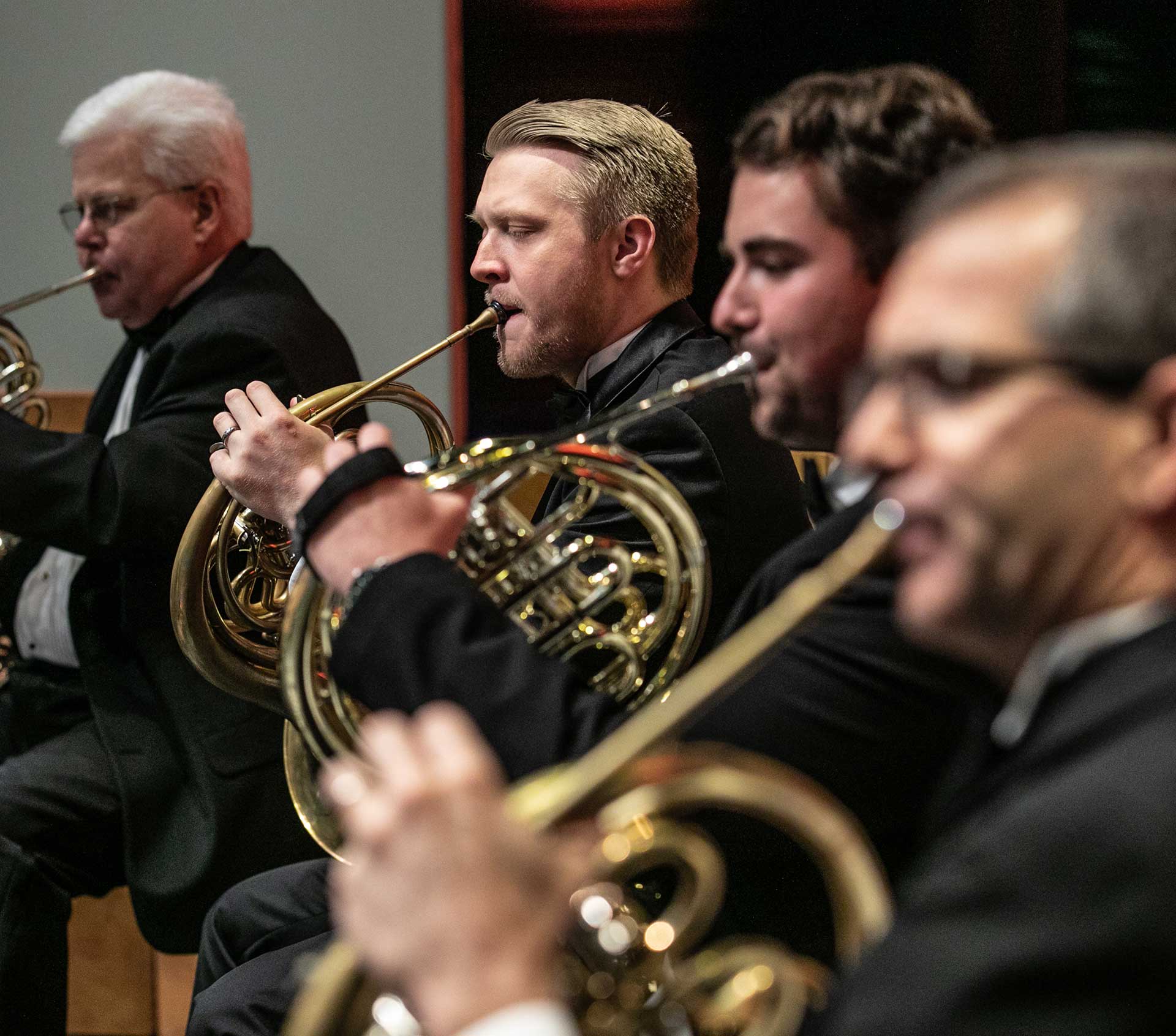
Violin 1
Edward Eanes,* Concertmaster
Robert Givens, Associate Principal
The Marnie R. Gresh Chair
Melody Bearden
Kerren Berz
Barbra Cariega
David Edwards
Heather Hart
Rosie Riquelme Artunez
Haejin Yoo
Violin 2
Angéle Lawless*
Grace Kawamura Stubbart* (acting principal)
Angela Baddock
Colin Cassell
Evelyn Champion
Beth Collier
Amber Dobbs
Amanda Esposito
Ryan Lavender
Joshua Mathew
Monika Ramnarayan
Patrick Ryan
Jennifer Sersaw
Jill Stokes
Ehsan Sheikholharam
Adolfo Huerta Torres
Viola
Meghan Yost*
Christina Esposito
Eric Johnson
Mary Koves
Kyle Mayes
Dave Miller
Greg Selig
Heather Vincenty
Blake Wright
Amanda Zhang
Cello
David Lloyd*
Megan Deason
Wesley Holmes
John Howell
Natallia Isabel
Nirav Patel
Stephanie Peterson
Dwayne Wasson
Double Bass
Robert Goin *
The Mary Kay Howard Chair
Christopher Bussert
Robert Lysse
Maximilian Simmons
Moe Winograd
* denotes section principal
Flute/Piccolo
Jeanne Carere*
Frankie Cavanah
Dana Meyer
Oboe
Christina Gavin*
Katie Smith
Alexander Zhang
English Horn
Alexander Zhang
Clarinet
Justin Stanley*
Theresa Stephens
Bass Clarinet
Daniel Barker
Bassoon
Debby Grove *
Daniel Worley
Contrabassoon
John Grove
French Horn
Jason Eklund*
Cole McDonald
Eric Hawkins
Scott Sappington
Patrick Hydo
Trumpet
Yvonne Toll*
Kevin Lyons
Alex Freund
Jon Klausman
Jesse Baker
Rachel Ragan
Trombone
Tavish Daly*
Jennifer Mitchell
Phil Truex
Doug Geiman
Tuba
Don Strand*
* denotes section principal
Harp
Julie Koenig*
Percussion
Jeff Kershner*
Greg Roman
Dakota Reeves
Timpani
John Lawless *
The John and Linda Cooke Chair
* denotes section principal
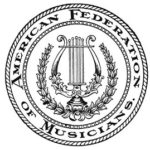
Musicians performing in orchestral productions are represented by the American Federation of Musicians of the United States and Canada.
Georgia Symphony Orchestra Chorus
Encompassing a wide range of vocal versatility, the Georgia Symphony Orchestra Chorus performs choral/orchestral works, pops, and produces independent choral concerts. Highlights from recent seasons include choral masterworks with the Georgia Symphony, being featured on a GSO Jazz! performance at the Strand Theatre, singing in a sold-out concert of music from the video game “Zelda,” and presenting a historic regional premiere of American music.
Comprised of accomplished vocalists from the greater metropolitan area, performances have included Mahler’s Second Symphony, Vaughan Williams’ Sea Symphony, Orff’s Carmina Burana, Haydn’s Creation, and Verdi’s Te Deum. The ensemble has also presented state, regional, and world premieres.
Founded in 2007, and directed by Bryan Black, the chorus recently performed with the Morehouse College Glee Club, the Spelman College Glee Club, the Uzee Brown Society of Choraliers, and the Georgia Spiritual Ensemble.
Shana Adams
Wisdom Anderson
Sarah Arrington
Lanie Baxter
Cathryne Belangee
Julia Bellezza
Heather Blalock
Cindy Bohn
Linda Bonstein
Crae Borsom
Atheleen Burley
Cailin Che
Molly Chow
Beth Collier
Amber Connor
Leah Crumley
Gwen Ehrhardt
Camille Fairbanks
Elaine Federico
Michaelyn Findley
Tiara Gomer-DeGomez
Karen Gonzalez
Rachael Gorbutt
Nancy Hodges
Marianne Holdzkom
Marian Hull
Judy Jones
Tara Kunesh
Amy LaPlume
Kathleen Laurendeau
Ashley Laverock
Stephanie Loomis
Tera Marsh
Katie Mattice
Margaret Menz
Mary Nimsgern
Virginia Osborne
Karen Partyka
Bliss Peterson
Bwashena Qadhafi
Brenda Rhodes
Julia Roberts
Luci Roberts
Patty Smitherman
Pat Snider
Carolee Stewart
Tammy Teal
Leslie D. Thompson
Shari Twine
Elmine Van Den Berg
Maria Velasquez
Mary Anne Valenti
Ann Vines
Carole Whitlow
Amanda Williams
Janet Adams
Morgan Baker
Laura Blakeslee
Sara Branch
Glendol Browder
Heather Buehner
Ramona Burkett
Karen Chin
Kecia Coar-Overall
Andrea Davis
Tiffany Fannin
Kelly Francis
Cate Godley
Lisa Greenwood
Judy Harvey
Rebecca Higgins
Debbie Holyfield
Peggy Hurst
Mary Hyde
Beth Johnson
Jenn Kunz
Cindy Landis
Erin Layton
Kelli LaVelle
Berna Levine
Kristen Loughman
Beverly Martin
Debra McCracken
Sharon Menear
Suzanne Milligan
Allison Nance
Linda Nordahl
Jacquelyn OBryan
Dana Pinnow
Sharona Sandberg
Riny Schartman
Laura Searcy
Marian Sebel
Christine Shoemaker
Joan Shorr
Rebecca Thach
Susan Traendly
Laurie Washington
Meredith Weber
Rose Whittingham
Mary Williams
Martha Willis
Timothy Adetunji
James Clarence Banks
Stephen Bennett
Logan Burley
Sean Condon
William Dyer
Tom Federico
Johnny Gravley
Chris Greenwood
Stephen Hall
Dean Hawkinson
Kevin Jennings
Scott Lamphere
John Love
Jimmie Nettles
Aderayo Oyegbade
Val Pyram
Robert Shull
Joshua Teal
David Abee
Robert Argent
Bob Bonstein
Kenneth Colson
Alan Davitte
Dave Erstfeld
Garret Federico
Joe Ferst
Ben Glosson
Frank Harris
Ken Johnson
Wates Keller
Brian Loomis
Dave Lozada
Robert Mayfield
John Morgan
Oral Moses
Michael Nolan
Michael Reeves
Alberto Sapoznik
Al Searcy
Vinny Varsalona
Harris Wheeler
Wally Ziprik

We the People
May 17, 2025
Dr. Bobbie Bailey & Family Performance Center
Presenting Sponsor
John Stafford Smith and Francis Scott Key, Harmonized and Orchestrated by Igor Stravinsky
The Star-Spangled Banner 1 (~2 minutes)
Aaron Copland
Appalachian Spring (Suite for Full Orchestra) (~25 minutes)
INTERMISSION (~15 minutes)
Timothy Verville
Requiem Americano -World Premiere- (~55 minutes total)
Timothy Miller, tenor
Atlanta Boy Choir
Georgia Symphony Orchestra Chorus
I. Introit (~6 minutes)
II. Kyrie: Civil War (~8 minutes)
III. Gradual, Tract: Social Isolation (~3 minutes)
IV. Dies irae: Anti-immigration (~7 minutes)
V. Offertory: Hypercommercialism (~5 minutes)
VI. Sanctus: Gun Violence [School Shootings] (~6 minutes)
VII. Agnus Dei: Thoughts and Prayers (~3 minutes)
VIII. Libera Me: Disproportionate Incarceration (~5 minutes)
IX. Hymnus Ad Exequias Defuncti [Hymn for the Burial of the Dead] (~12 minutes)
Program Notes
Igor Stravinsky, orchestral arrangement of “The Star-Spangled Banner” (1941)
By anyone’s reasonable reckoning one of the most significant composers of the 20th century, the Russian-born Igor Stravinsky had, in 1941, been living in the United States (seeking refuge from the danger and deprivation of World War II) for two years. He wanted to make a patriotic gesture, as he was contemplating applying for American citizenship, which he received in 1945. But America didn’t exactly appreciate Stravinsky’s gift: an arrangement of “The Star-Spangled Banner.”
Two things gave Stravinsky the idea of writing the arrangement. First, a would-be composer who visited him twice a week “to have his works re-composed” by Stravinsky suggested it. Secondly, since Stravinsky was obliged to begin all of his concerts with the National Anthem anyway, and didn’t care for any of the existing arrangements, he set to work. He finished it in Los Angeles on July 4, 1941. Shortly afterward an orchestra and chorus performed it. Stravinsky sent the manuscript to Eleanor Roosevelt for a war-fund auction. The manuscript was returned with an apology. Stravinsky could only guess at the reason for its refusal. “My major seventh chord in the second strain of the piece, the part patriotic ladies like best, must have embarrassed some high official,” he speculated.
In the winter of 1944, Stravinsky performed his arrangement while conducting the Boston Symphony Orchestra. He stood with his back to the orchestra, conducting an audience that refrained from singing. At the time, no one seemed to notice that Stravinsky’s arrangement was different from the traditional ones, but the next day, he found out that someone had noticed. Just before a second concert, a Boston police commissioner visited Stravinsky in his dressing room and informed him of a Massachusetts law against “tampering” with national property. The policeman said that officers had already been told to remove the arrangement from the music stands. Stravinsky liked to embellish his narratives with colorful and imaginative details of dubious accuracy and often claimed he had been threatened with arrest and/or deportation if he repeated the arrangement in Boston, though this appears not to have actually been the case.
Stravinsky responded to the Boston PD that if there was a definitive version of the “Star-Spangled Banner” it was not played very often in Massachusetts. But the argument fell on deaf ears, and the Stravinsky arrangement of the National Anthem has rarely been played since. “It ought to be,” Stravinsky, never lacking in brash élan or self-confidence, later said. “For it makes the linear and harmonic best of the material, and is certainly superior to any other version I have heard.”
Program Note by Jeffrey L. Tucker
Aaron Copland, Appalachian Spring Suite (1945)
In the 1930s, Aaron Copland wrote that he was deliberately making a significant change in his style. “I felt that it was worthwhile to see if I couldn’t say what I had to say in the simplest possible terms.” He was committed to creating a distinctive American voice in music. It was Copland’s genius for finding the memorable, evocative musical phrase that moved him from the avant-garde maverick he had been in the 20s to the voice of America that characterizes his reputation today. There is no question he succeeded brilliantly. Composer Virgil Thompson called him “The President of American Music.” His music in this regard was so effecting, so endearing, so comprehensible, so identifiable as ours, that he singularly defined the American spirit in music.
Appalachian Spring began simply as “Ballet for Martha,” referring to Martha Graham’s ballet troupe. According to Copland, the music was based on his friendship with Graham herself. “I was thinking primarily about Martha and her unique choreographic style, which I knew well. Nobody else seems quite like Martha: she’s so proud, so very much herself. And she’s unquestionably very American: there’s something prim and restrained, simple yet strong about her which one tends to think of as American.” Copland met Martha Graham in the early 1930s at a concert that featured his Piano Variations (1930). She told the composer she wanted to dance to it; Copland told her that was “impossible.” Proving him wrong, she created the dance Dithyramb. Copland was thunderstruck. “Surely only an artist with an understanding of my work could have visualized dance material in so rhythmically complex and thematically abstruse a composition.”
The composer began work on the ballet in the summer of 1943, commissioned by the Foundation of Arts patron Elizabeth Sprague Coolidge, who paid him $500 “for a dance piece” and no more than a dozen musicians. As finished, the original score calls for a chamber ensemble of 13 players. Martha Graham (who actually gave the work its title) had been inspired for a ballet by Hart Crane’s poem, “The Dance,” which included these lines:
O Appalachian Spring! I gained the ledge;
Steep, inaccessible smile that eastward bends
And northward reaches in that violet wedge
Of Adirondacks!
The ballet received the Pulitzer Prize in May, 1945. Copland orchestrated the chamber score for full orchestra during the following summer and the Suite we will hear premiered on October 4, 1945, with the New York Philharmonic conducted by Artur Rodzinski. All 5 of the versions Copland made over the years are well worth exploring!
The scenario for the ballet takes place in the early 19th century, on the site of a Pennsylvania farmhouse that was a wedding gift to a young couple. Copland wrote, “The bride-to-be and the young farmer-husband enact the emotions, joyful and apprehensive, which their new domestic partnership invites. An old neighbor suggests, now and then, the rocky confidence of experience. A revivalist and his followers remind the new householders of the strange and terrible aspects of human fate. At the end the couple are left quiet and strong in their new house.”
The original ballet had 14 segments lasting some 35 minutes; the orchestral version has eight, with a performance duration of around 25 minutes. The composer kindly provided the following road map to the orchestral version:
- Very slowly. Introduction of the characters, one by one, in a suffused light.
- Fast. Sudden burst of unison strings in A Major arpeggios starts the action. A sentiment both elated and religious gives the keynote to this scene.
- Moderate. Duo for the Bride and her Intended — scene of tenderness and passion.
- Quite fast. The Revivalist and his flock. Folksy feeling — suggestions of square dances and country fiddlers.
- Still faster. Solo dance of the Bride — presentiment of motherhood. Extremes of joy and fear and wonder.
- Very slowly (as at first). Transition scene to music reminiscent of the introduction.
- Calm and flowing. Scenes of daily activity for the Bride and her Farmer husband. There are five variations on a Shaker theme. The theme, sung by a solo clarinet, was taken from a collection of Shaker melodies compiled by author Edward D. Andrews, and published under the title “The Gift to Be Simple.” The melody most borrowed and used almost literally is called “Simple Gifts.”
- Moderate. Coda. The Bride takes her place among her neighbors. At the end the couple are left “quiet and strong in their new house.” Muted strings intone a hushed prayerlike chorale passage. The close is reminiscent of the opening music.
The above became iconic American music, deeply embedded and embraced in our culture. The seventh section, “Simple Gifts,” sometimes tends to steal the show, which the composer recognized very early on. In response, Copland made a separate arrangement for orchestra, titled “Variations on a Shaker Tune,” which has also become part of our American musical heritage.
Although he had composed the work simply as the abstract “Ballet for Martha,” Copland’s musical setting was so ideally persuasive and memorable that it soon came to seem impossible to hear apart from its narrative scenario. On one occasion, the composer recalled that an audience member, after hearing Appalachian Spring in 1981, came up to him and said, “Mr. Copland … when I hear your music, I can just see the Appalachians and I just feel spring. …” Copland responded, “After all these years, I can too!”
Program Note by Jeffrey L. Tucker
Requiem Americano was completed in 2022 after nearly two years of composition, beginning in the wake of the COVID-19 pandemic in 2020. Though the work is not explicitly about the pandemic—aside from the third movement—it emerged from that period of isolation and uncertainty, providing a creative framework to explore broader American societal issues. The piece is notable for its unique approach: a fusion of the traditional European requiem form with American musical idioms, making it distinct in both scope and intent. In 2023, the piece was awarded an Honorable Mention by the American Prize in Composition.
The title draws from Caffé Americano, a coffee style that originated when American soldiers during World War II requested their espresso be modified to resemble the coffee they drank at home. In a similar spirit, Requiem Americano adapts the European requiem tradition, infusing it with American folk, popular, and nationalistic styles. This blending of genres creates a familiar, approachable musical language while addressing complex societal themes with seriousness and nuance.
The work is structured in nine movements, framed by the traditional Introit and the non-traditional closing Hymnus Ad Exequias Defuncti. Each inner movement addresses a different issue within American life, with motifs and themes recurring throughout.
The Introit opens with a few solitary notes in the trumpets followed by a dramatic chromatic descent in the orchestra. A tenor soloist then enters with traditional liturgical text, later joined by chorus. Foreshadowing motifs appear in the orchestral accompaniment, unveiling musical ideas that will surface in later movements.
The Kyrie is one of the most narrative-driven sections, reflecting on the lingering scars of the Civil War. A solo fiddle introduces “Lorena,” a beloved tune from the era, which morphs into a hymn-like melody reminiscent of rural Protestant churches. Elements of the “Battle Hymn of the Republic” are layered with the Kyrie text before war erupts musically with “The First Gun is Fired.” The “fiddle” returns in the end, but this time, as a dark viola solo closing the movement. Its music now changed—symbolizing the transformation of the young protagonist by war and signifying emotional scars and unresolved national divisions.
Gradual & Tract merges two liturgical components into one, using shape-note choral music from The Sacred Harp, a folk tradition passed through generations in the American South. Sung in English, this movement reflects on activities lost during the pandemic—communal singing—and expands its scope to the present, highlighting how digital silos and online life continue to increase social isolation even after lockdowns have ended.
The Dies Irae addresses anti-immigration sentiment through the lens of Mexican-American musical heritage. It reimagines the traditional Day of Judgment text as a dramatic, and at times, lighthearted narrative. A tenor soloist gradually realizes that the fate he sings about also applies to himself. Incorporating Mexican-American styles affirms their essential role and contribution to American music, echoing how immigrant traditions—including a particular British melody that became the U.S. national anthem—have long added to the nation’s cultural fabric.
The Offertory takes on the topic of hypercommercialism. Written in the cinematic style of early 2000s American film scores, it conjures an imagined ritual where consumers are sacrificed to corporate greed. The movement critiques the ever-increasing saturation of marketing and advertising in daily life—from entertainment and social media to even the spaces once considered free from ads.
Sanctus reflects on the tragedy of school shootings. It begins with haunting low brass, followed by a youth chorus singing “Sanctus, Sanctus, Sanctus [Holy, Holy, Holy].” The full choir joins, but shortly after, the music fractures. Voices splinter into layered fragments, including the haunting line “Pleni sunt coeli [The heavens are full],” sung by tenors, underscoring the devastating toll on children. Snare drums evoke gunfire, guiding the music into a march of mourning. The chorus repeatedly exclaims “Hosanna!” driving into climactic despair, which briefly pauses before transitioning to the next movement.
The work continues into the Agnus Dei, portraying the cycle of passive response following national tragedies. While musically sincere, it reflects a cultural tendency to offer “thoughts and prayers” without pursuing meaningful change. The movement ends on a major chord, musically implying closure. But this sense of resolution is an illusion.
In Libera me, themes of incarceration and forced labor are voiced through the structure of a prison work song. A solo tenor is joined by percussion mimicking the sounds of physical labor. The tenors and basses join in, followed by the strings who take over the melody, which is mixed with the returning chromatic motif from the opening of the requiem. The movement ends with another sung refrain, reinforcing the ongoing cycle of mass disproportionate incarceration.
The final movement, Hymnus Ad Exequias Defuncti, is a setting of excerpts of a text by the 4th-century writer Prudentius. The central line, “For all created things must wane,” becomes the philosophical crux of the requiem. It opens with solemn, patriotic music, evoking a national funeral, before erupting as the full weight of societal failure is realized. The chorus then begins a slow, building lament, with fragments of earlier movements layered into a dense, emotional climax. But as the movement reaches its final peak, it withholds resolution. The final notes quote the Agnus Dei, and the chromatic motif returns—signaling that despite recognition of these problems, no genuine solutions have been employed. The work ends not with closure, but with a quiet warning: history is doomed to continue repeating itself if nothing changes.
Program Note provided by the composer.

